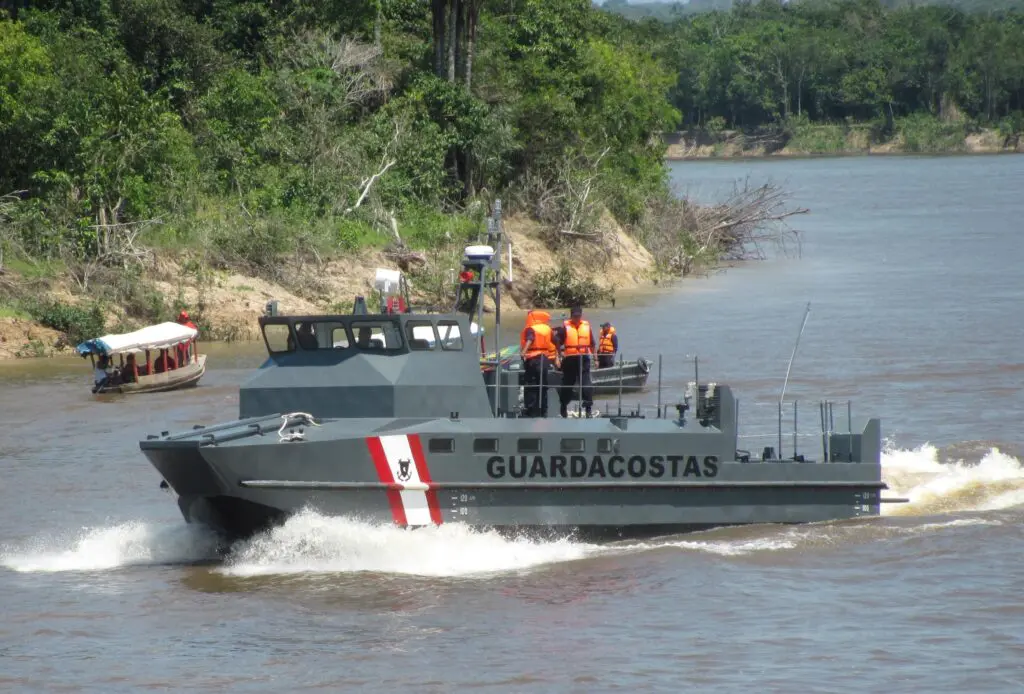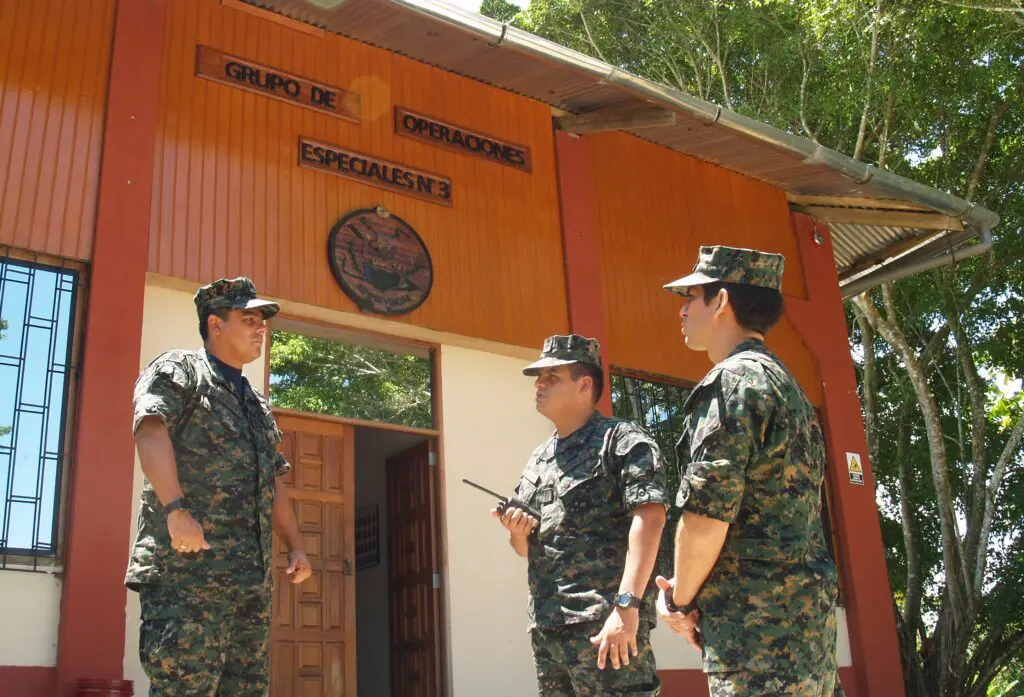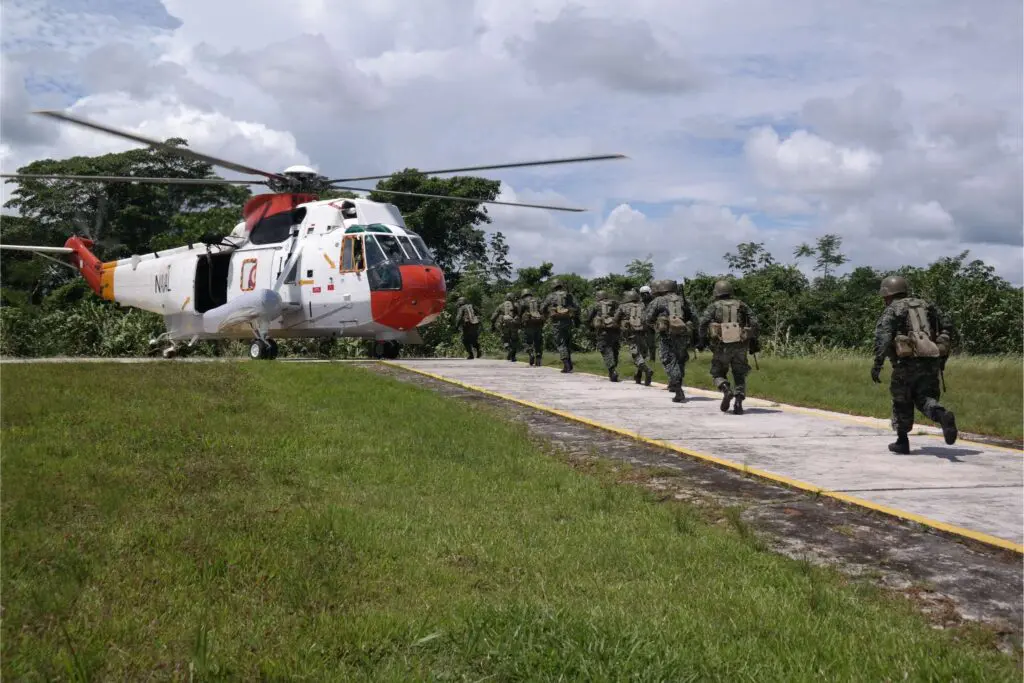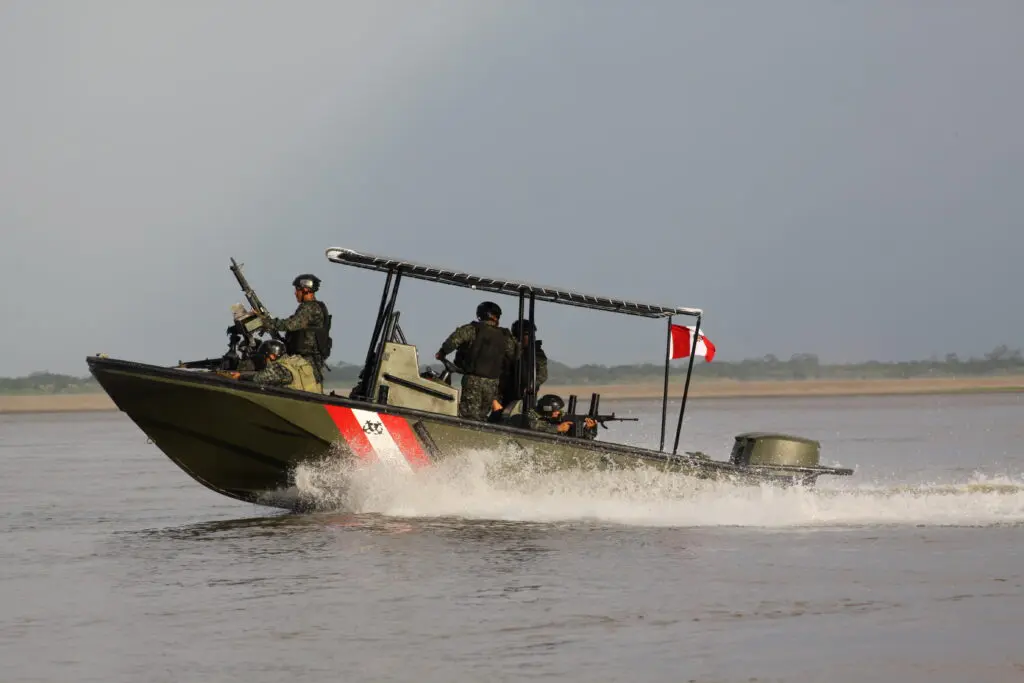Less well-known than its “blue water” counterpart but of great importance for the security and development of the country is the “other” Peruvian Navy, which operates in the Amazon River. This is the General Command of Amazon Operations (COMOPERAMA), whose command post is located in the city of Iquitos, where the Fifth Naval Zone headquarters is also located. It’s over 1,000 kilometers in a straight line from the Naval Base of Callao or a two-hour commercial flight, a logistical challenge of incalculable dimensions that has fortunately been overcomed. By land, the situation takes almost a week climbing the mountains to descend to the low jungle, and from there, the journey takes two days of river navigation to complete. All of this is much less than the long months spent by the brave sailors of the 19th century, who arrived in 1864 to establish the Port Captaincy of Iquitos and assert Peruvian naval power in those remote lands.
Great Responsibilities

160 years after, the Navy in the Amazon has achieved a high level of development and professional and technological autonomy, being able to fulfill its mission of safeguarding the borders with Brazil and Colombia without inconvenience. Let´s remember that in this space, transnational threats have emerged, such as drug trafficking, illegal mining and logging, smuggling, and human trafficking, with the increasingly worrying presence of former FARC guerrillas.
This border sector of the Putumayo is becoming a “hot zone” due to the increasing activity of organized gangs and the cultivation of coca leaf for the production of coca paste and cocaine hydrochloride. This situation is confronted with the increase in river patrols and joint operations with the Colombian and Brazilian Navies, such as the multinational exercise BRA-COL-PER 2024.
This international event allows for enhancing capabilities to address transnational threats and crimes that affect security and development in the border areas of the Amazon region.
Fluvial Power
The operational means available to COMOPERAMA currently are based on the Riverine Units Flotilla, consisting of the Riverine Gunboats BAP Marañón (CF-13) and BAP Ucayali (CF-14), with over 50 years of service but still capable of combat. Also, the much more modern Riverine Gunboats BAP Clavero (CF-15) and BAP Castilla (CF-16), designed and produced in SIMA Iquitos in the last 15 years, equipped with modern weaponry and very efficient.

Also, there are the Amazon River Control Units (UCF-11) and BAP Loreto (UCF-12), former riverine gunboats incorporated almost a century ago, which today continue to provide services, this time as floating fixed posts. There is also the Amazon Marine Infantry Battalion No. 1 “Second Lieutenant Raúl Riboty Villalpando,” a river patrol and assault unit deployed in Naval Detachments in the border area.
Additionally, there is Special Operations Group No. 3, from the Special Operations Force Command (FOES), specializing in jungle combat and amphibious combat. There is also the Amazon Naval Aviation Squadron, which conducts surveillance and defense operations and supports the riverine force with Sikorsky SH-3D ‘Sea King’ aircraft from the Naval Aviation Force Command.

An important technological component is the Navy Industrial Service (SIMA Peru), whose operations center in Iquitos (SIMA Iquitos) has birthed important projects such as the BAP Clavero and BAP Castilla. It also serves as a repair and maintenance center for all types and classes of vessels for both the Navy and the Peruvian Army, which also has river units.
What’s Coming Next
COMOPERAMA continues to work on strengthening its capabilities, based on a development plan that includes, among others, the upgrading of its aerial component. Let us remember that until a few years ago, there was a Mil Mi-8T assigned for all-weather operations, as well as De Havilland Canada DHC-6 Twin Otter seaplanes, which are now out of service.

The replacement of the two oldest riverine gunboats will also need to be addressed soon, based on the successful experience of local production of similar vessels carried out with SIMA. Another key aspect is the optimization of control actions through personnel training, with the support of the Riverine Coast Guard Operations School and its Riverine Operations course.
Additionally, the closer cooperation with the Brazilian Navy and the Colombian National Navy to improve procedures and the level of training to allow for the development of combined operations in the triple border is crucial.
You may also like: The true meaning of the sailing journey around the world of the Peruvian Navy’s sailboat “Unión”









